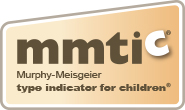Persuasion Does Not Work for All Children
Usually children approach school and authority figures from two different perspectives. One is a "teacher pleaser." They want the teacher to like them so they will more frequently do whatever the teacher asks in order to be in the teacher's favor. The second style is a "rule follower." If there is a rule (a reasonable and good rule), this child is willing to comply. The first kind of child responds positively to persuasion from a teacher. The second does not. For the second child, persuasion merely suggests there are two choices.
Here is a preschool example. It was time to come to circle for a story and one preschool child wanted to stay and play with the blocks. The teacher used persuasion as her method of communicating with the children. The teacher said, "Okay, kids. Everybody come to circle. It is circle time.?" One child continued to play in the blocks area. The teacher approached the child with a gentle, charming voice and said, "Wouldn't you like to come sit with all of us on the circle" It is time for circle, honey." The child said, "No. I want to play with the blocks." So the teacher pulled out even greater persuasive tools. "I'll let you hold the special book. You can sit right by me and hold the bear and the book and help me with all the projects. How about that"? The child answered, "No, I want to play with the blocks." The teacher became frustrated because her persuasive tools were not working. She thought there must be something wrong with the child's social skills.

Those "non-teacher-pleaser" children hear persuasion as an option. This child likely heard there was a choice between circle or blocks. The phrase "wouldn't you like?" meant they could say no and choose something else. The frustration for the teacher came because her primary tool was not working with this child. The child does not consider the rejection of circle as disrespectful because there was a choice ("wouldn't you like?"). They are then surprised when they are given a consequence for not coming to circle.
The second type of child responds to fair and reasonable rules. They are black and white in their communication skills and respond to direct rules. When the child first said they wanted to stay and play with the blocks they teacher could have used active listening skills and responded, "You wish you could stay and play with the blocks but it is circle time. When it is circle time we all come to circle. Come now."
If the child persisted to get their way the teacher would repeat. "No. At circle time all children come to the circle. Come now. Blocks are for another time." If the child continued to resist we are going beyond style. Something else is happening. Perhaps the work addressed during circle time is confusing for the child. Still the teacher needs to keep the rule front and center. With a calm voice the teacher could repeat. "The circle rule is all children sit on the circle at circle time. I will be there to help you if circle work is difficult. I believe in you and believe you can learn everything we are sharing. Come now."
Never bribe or promise something as a reward for coming to circle (e.g. you can hold the bear) because then the child is responding to the reward and not the rule, and you will be encouraging that behavior in the future.
After circle, the teacher might say to the child, "I am very proud of you. Your decision to follow the rule and join the group was exactly the right thing to do. I enjoyed hearing your thoughts during our time on circle."



_thumb.png)

















